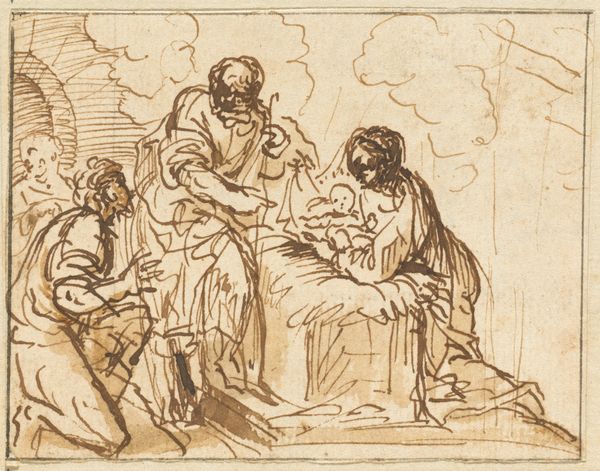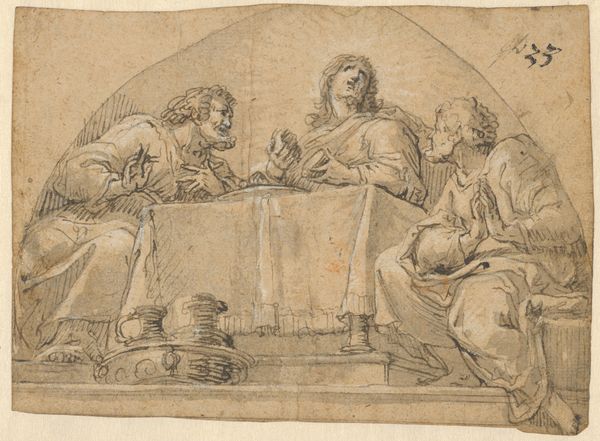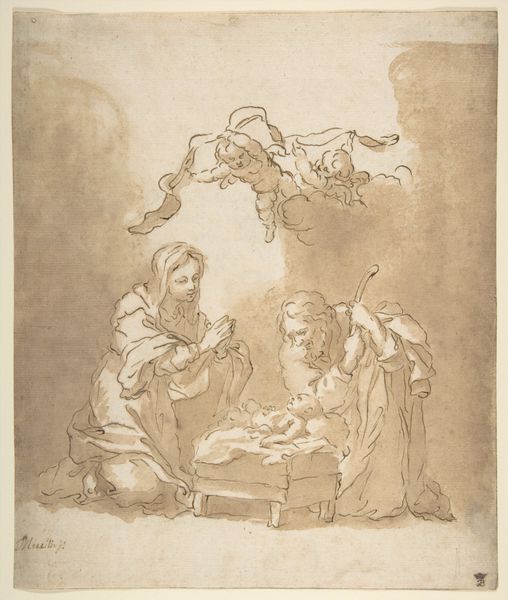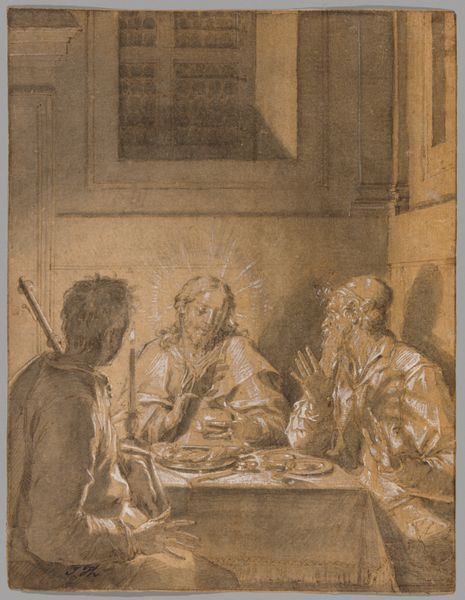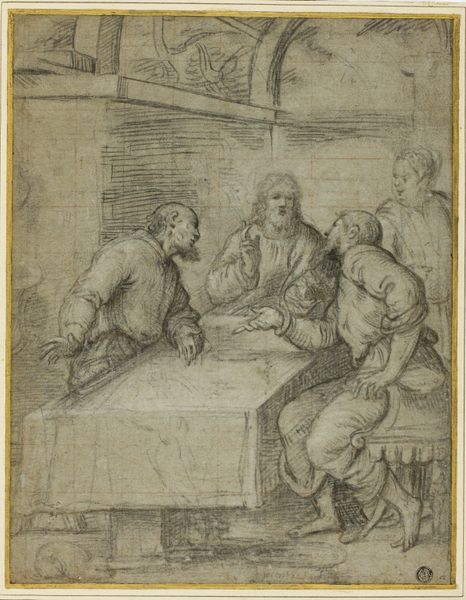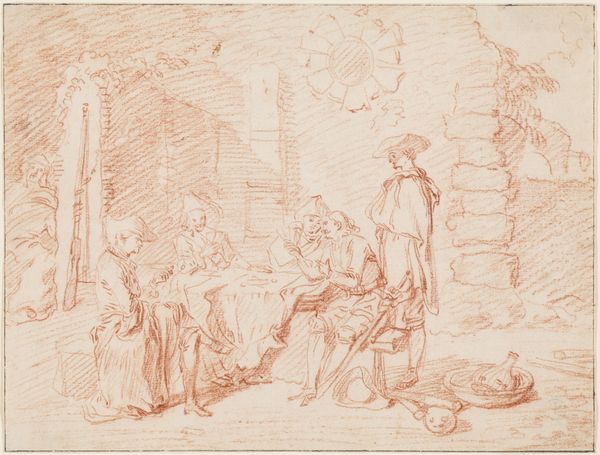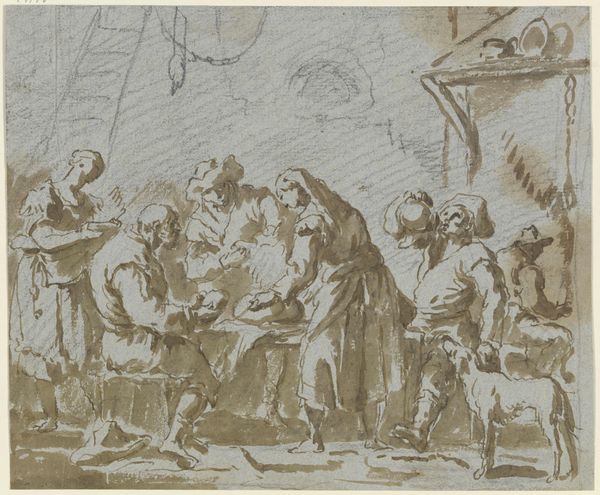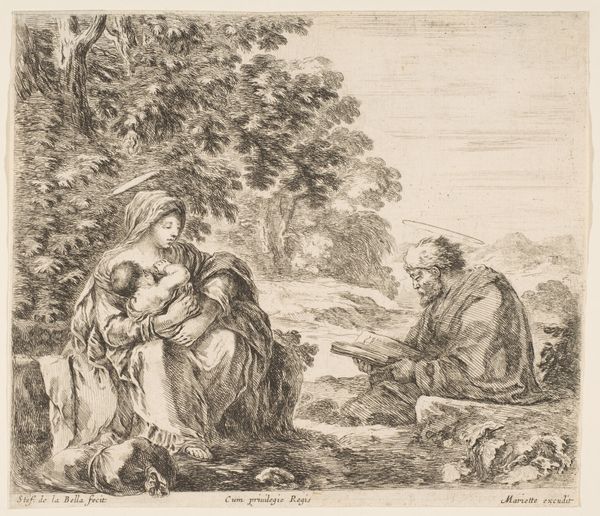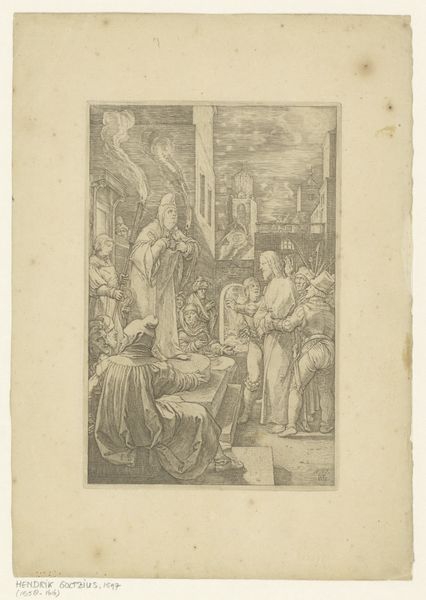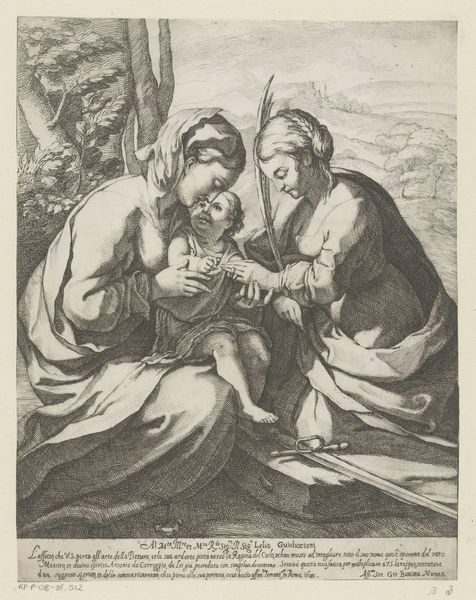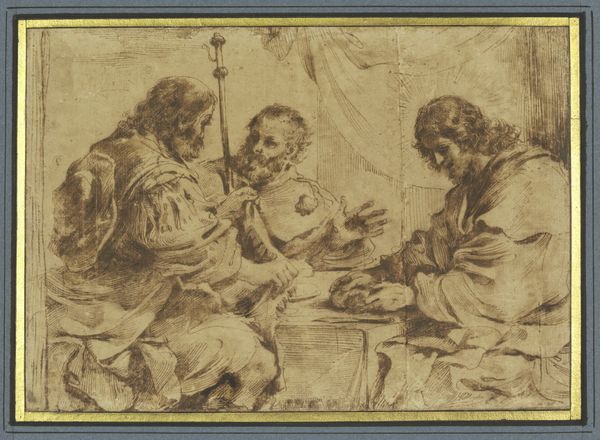
drawing, ink
#
drawing
#
narrative-art
#
baroque
#
figuration
#
ink
#
genre-painting
Dimensions: Overall (approximate): 10.5 x 13.8 cm (4 1/8 x 5 7/16 in.) support: 20.3 x 33.7 cm (8 x 13 1/4 in.)
Copyright: National Gallery of Art: CC0 1.0
Curator: This ink drawing is "Supper at Emmaus" by Abraham van Diepenbeeck. Look at the way Diepenbeeck uses simple materials to convey such a powerful narrative. Editor: My immediate reaction is a sense of intimacy, yet also dramatic surprise. The somber ink wash creates a quiet, reflective mood, sharply contrasted by the dynamic gestures of the figures. Curator: Precisely! Notice how the artist skillfully utilizes ink to vary the tones and textures. By examining the quality of the ink and the paper, we gain insight into the artist's process, a crucial aspect of art production in the Baroque period. What do you think it might be like to see how this artwork was crafted, layer by layer? Editor: I think it asks interesting questions about faith, recognition, and social relationships, particularly through the lens of shared meals. Who gets a seat at the table and what does that mean? Curator: Absolutely. It is interesting to note how art challenges the established power structures of its time. Diepenbeeck's piece utilizes common and accessible materials, democratizing the making of art to a degree. How does it relate to the culture from which it came? Editor: I appreciate how it depicts a key moment of revelation but also consider what such depictions leave out. This particular scene resonates with questions of inclusion, faith, and the disruption of established norms – crucial points to unpack when considering Baroque religious art today. Curator: It offers a profound commentary on the nature of belief, representation, and visual culture through the act of image-making. We gain insight into production means by exploring labor, materiality, and consumption. Editor: Considering all this work inspires introspection, it highlights that representation has consequences and historical context. Engaging with artworks like this enables us to recognize the impact that the legacy of art has on issues we grapple with in the current moment.
Comments
No comments
Be the first to comment and join the conversation on the ultimate creative platform.
